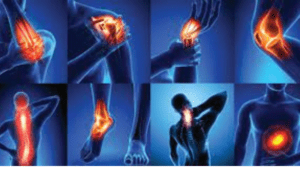Joints are an important part of the body system. Without joints in the body, the body system will not function properly and movement will not be achieved easily. In case someone notices some pains in the joint, called “arthralgia”, it might not be easy to exercise some duties. Below are the essential things to know about joint pains.
This article will be putting us through all about joints, causes, symptoms, diagnosis, treatments, etc.
What is a joint?
According to the general meaning of joint, a joint is a place or points where bones meet. The meeting of these bones forms what we called the skeletal system of the human body. Generally, we have two types of joints, namely: movable and immovable joints.
Movable joints: These types of joints are those that are movable, they are not fixed and can be moved around easily without any restriction. Such joints can be found in the wrist, shoulder, elbow, knee, and hip. The movable joints have a cavity that contains synovial fluid.
Immovable joints: These joints are fixed and can not be moved, unlike movable joints. Examples of these joints can be found in the joints between the sockets in the jaws and the joints between the teeth, the cranium in the skull, and the joints between the bones of the lower legs
Causes of Joint pain
There are several reasons and causes that made people experience joint pain in their body system. Having pains in multiple joints is called “polyarthralgia”. Although joint pains may be a result of infections, illness, inflammations, or injury sustained. Below are some of the important things to know about joint pains:
Infections
There are several infections that might result in joint pain. An example is the “hepatitis C virus” (HCV) which invariably causes complications and can amount to joint pain. This HCV causes a whole lot of problems, part of which is joint pains.
Illness
Illness is known to be one of the causes of joint pains. Lupus is one of the illnesses that at least half of people having it will experience joint pains. A lot of people develop lupus when the immune system becomes hyperactive.
The most common signs or symptoms of lupus are joint pains and muscle.
Injury
Injuries are not good for the body system when sustained. Injuries cause several joint pains, such as on the knee, wrist, elbow, etc. injuries can be sustained by overworking or stressing the joints.
For example, those that do participate in sports like football, rugby, basketball, etc. are likely and possibly have a greater risk of sustaining an injury at the “anterior cruciate ligament” (ACL), which will definitely result in joint pains at the knee.
Inflammations
We have “Arthralgia” and “arthritis”, both are about joint pain and are similar but have some differences. More than half of people with “arthritis” do complain of having pains in different joints.
There are several types of arthritis, part of which includes:
- rheumatoid arthritis (RA)
- osteoarthritis (OA)
- septic arthritis
- gout
Among these various types, varies the causes of arthritis.
Rheumatoid arthritis (RA) is always an autoimmune response. Whenever the body notices a slight difference that might cause any harm to the body system, thought this might cause the bones and cartilage in the joints to be degraded and result in joint pain.
Osteoarthritis (OA) is mainly caused by the loss of cartilage in the joints. The cartilage is made thinner through the calcification of cartilage around the joints. Adults are more prone to the development of OA.
Septic arthritis occurs from the infections of bacteria. When bacteria penetrate into the synovial fluid in the joint to destroy the cartilage, it definitely results in joint pain called arthritis.
Lastly, one more thing to know about joint pains is gout, caused by the crystallization of the uric acid in the body system. Just when the uric acid moves around the body and gets to the joints, then it leads to Inflammation.
symptoms
There are some other symptoms to take note of when feeling joint pain, these include:
- Fatigue
- Joint stiffness.
- Joint tenderness.
- Swelling of joints.
- Weakness in joints.
- Joint movement is limited.
Diagnosis
Before a diagnosis is carried out, a doctor must have been involved, to carry out his work and run through the patient medical history before doing a physical check or physical examination on such a patient.
In order to undergo a diagnosis, the doctor might order a laboratory test. Part of the test may include doing a blood test to check the following:
- uric acid.
- C-reactive protein.
- rheumatoid factor.
- antinuclear antibodies.
- erythrocyte sedimentation rate
Diagnosis can be achieved through ultrasound, X-ray, MRI, and CT scans.
When to see the doctor
It is always pertinent to see a doctor when feeling pains in different joints in the body system.
In case the joint pain is caused by infections, the doctor might probably prescribe to the patient, “antivirals” or “antibiotics” to reduce the joint pain.
Probably if the pain is caused by arthritis or injury, the doctor might refer the patient to a physical therapist. At times if the pain still persists, the doctor may advise the patient to go for surgery.
Also read:
- A Pregnancy Tests Strip
- How to open WhatsApp on laptop
- Important Ways of Improving Vision after over 50 years
Comment and share with all your loved ones.
Thanks for reading.
